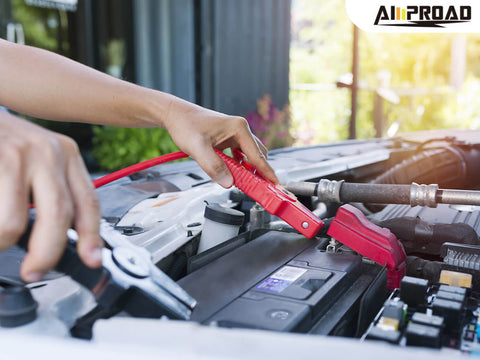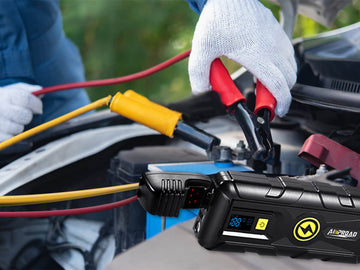
Your car sputters to a halt, the battery dead. Will your trusty jump starter actually start it when you need it most? Don't leave yourself stranded! This article dives into key factors to consider when testing a jump starter's performance. We'll explore methods to assess real-world cranking power, user-friendliness in stressful situations, and long-term durability. We'll also help you navigate misleading marketing claims to find the most reliable jump starter to keep you on the road. Jump start your knowledge before your next dead battery!
Practical Performance Testing of Jump Starter Pack
A dead battery on the road can be a stressful situation. But before you resign yourself to a tow truck, consider the power of a jump starter pack. However, how do you know if the advertised cranking amps (CA) translate to real-world starting power? Let's explore practical methods to test your jump starter's true capabilities.
Cranking Amps vs. Real-World Performance
Published cranking amps are a good starting point, but they don't always tell the whole story. A more powerful jump starter (like a high-end AMPROAD versatile portable jump starter which can Boost up to 10.0L gas & diesel engine) might boast a higher CA rating compared to a basic model. However, real-world factors like battery size and vehicle type can also play a role. Testing with different car models, including common family sedans and larger SUVs, can provide a more accurate picture of how your jump starter performs under varying loads.
Handling Different Battery Sizes and Vehicle Types
Not all car batteries are created equal. A jump starter designed for a compact car might struggle to revive the larger battery of a truck. Testing with vehicles that have different battery sizes (measured in amp-hours, Ah) allows you to assess your jump starter's ability to handle a wider range of situations. This is especially important if you plan to use your jump starter on a variety of vehicles, from your own family car to helping out a friend with a larger SUV.
Simulating the Cold Weather Challenge
Cold weather throws a curveball at jump starting. Battery performance dips in colder temperatures, requiring more cranking power from your jump starter. While some models advertise cold cranking amps (CCA), there's no substitute for real-world testing. Simulating cold weather conditions (using a safe and controlled environment) can reveal how your car booster pack performs when you need it most – on a frosty morning when your car refuses to turn over.
By implementing these practical testing methods, you can gain valuable insights into the true capabilities of your jump starter. In the next section, we'll shift gears to user-friendliness. After all, even the most powerful jump starter won't help if it's difficult to operate in a stressful situation.
User-friendliness Under Pressure
A dead battery on a cold winter morning can leave you feeling stranded and frustrated. But with a well-tested jump starter and a user-friendly design, you can get back on the road quickly and safely. Here, we explore the importance of user-friendliness when choosing a jump starter.
Stress-Free Starting: Easy Operation in Cold Weather
Let's face it, jump starting a car isn't always a calm process. Fumbling with complicated instructions or bulky cables in the cold can add to the frustration. Look for a jump starter that prioritizes user-friendliness. Clear and concise instructions, ideally with visual guides, are essential, especially for those with limited mechanical knowledge. The process of how to boost a car properly in cold weather, including any necessary steps specific to the jump starter model, should be clearly outlined.
Secure Connections and Quality Construction
Loose or poorly made cables can lead to sparking and safety hazards during the jump starting process. Choose a jump starter with high-quality cables that feel secure and have strong clamps that grip the battery terminals firmly. Look for features like insulated clamps to minimize the risk of accidental shorts.
User-Friendly Features for Everyone
Beyond basic operation, consider user-friendly features that enhance the overall experience. An easy-to-read LED display showing battery levels and jump starter status can provide valuable information at a glance. Compact and lightweight design makes the battery booster easier to store and maneuver in tight spaces, especially under the hood of a car.
By prioritizing user-friendliness, you can ensure that your jump starter is a reliable tool that empowers you to handle a dead battery situation with confidence, even under pressure. In the next section, we'll delve into the importance of long-term durability and reliability, essential qualities for a jump starter that will be your trusted companion for years to come.
Durability and Long-Term Reliability: A Long-Term Investment
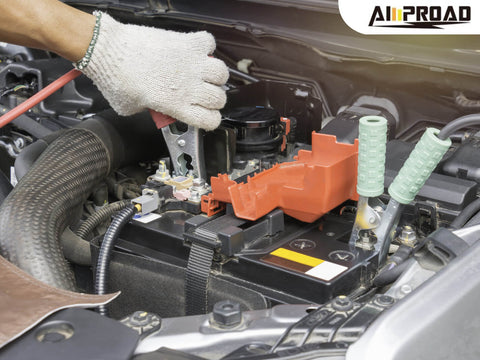
A jump starter is an investment, and you want to be confident it will be a reliable companion for years to come. Here's how to assess its long-term durability:
Can a jump starter withstand repeated use without sacrificing performance or safety?
A jump starter shouldn't be a one-time use solution. You want it to perform consistently, even after multiple uses. Ideally, the jump starter should maintain its cranking power and ability to start your car, regardless of whether it's your first time using it or after it's helped you out on multiple occasions. Look for reviews from real users who can share their experiences with repeated use and the jump starter's ability to hold up over time.
How do we assess the quality of the internal components and the overall build quality of the jump starter?
Durability starts with quality construction. A well-built jump starter will have sturdy casing that can withstand everyday bumps and potential drops. Look for a unit with high-quality internal components, like heavy-duty copper cables and reliable circuit boards. While you might not be able to dissect the jump starter yourself, reading reviews from technical experts can offer insights into the quality of internal components used by different brands.
Are there effective ways to test the lifespan of the battery within the jump starter itself?
The heart of your jump starter is its battery. While most jump starters use lithium-ion batteries known for their long lifespans, it's still important to consider how long the battery will hold a charge and maintain its ability to deliver starting power. Unfortunately, there's no single definitive test for battery lifespan. However, reading reviews that mention how long the jump starter holds a charge between uses and if users have experienced any battery degradation over time can be helpful.
By prioritizing these factors, you can choose a jump starter built to last, ensuring it remains a reliable tool in your car care arsenal for years to come. In the next section, we'll shift gears to safety, a crucial aspect of jump starting your car.
Evaluating Potential Risks and Precautions
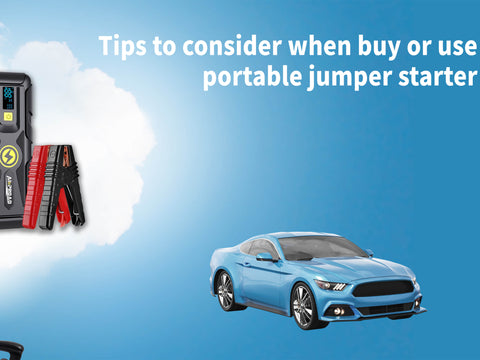
Jump starting your car can be a lifesaver, but safety should always be the top priority. Let's explore how to minimize risks and ensure a safe jump starting experience.
How well do jump starters handle user errors or incorrect connections during the jump starting process?
Even the most tech-savvy person can make mistakes. A good booster batterie should be forgiving of user errors or incorrect connections during the jump starting process. Look for models with built-in safeguards to prevent damage from accidental mishaps. This might include features like automatic shutoff in case of incorrect polarity or warnings if the voltage is too low.
Do they have built-in safety features like spark protection and reverse polarity protection?
Safety features are paramount. Spark-proof technology helps prevent accidental sparking during connection, reducing the risk of explosion or fire near the battery. Reverse polarity protection is another crucial feature. It safeguards against accidentally connecting the positive and negative clamps incorrectly, which can damage your car's electrical system. Look for jump starters that clearly indicate these built-in safety features.
What resources or training materials are offered by the manufacturer to ensure safe and proper use?
Jump starting doesn't have to be an intimidating process. Reliable manufacturers will provide clear and easy-to-understand instructions with their jump starters. These resources should ideally include visual guides and step-by-step instructions tailored to their specific model. Additionally, some manufacturers offer online tutorials or training materials to ensure safe and proper use of their jump starters.
By prioritizing safety features and user education, you can ensure that jump starting your car is a quick and worry-free experience. In the next section, we'll explore the importance of independent reviews and cutting through marketing jargon to find the perfect jump starter for your needs.
Real-World Reviews and Independent Testing
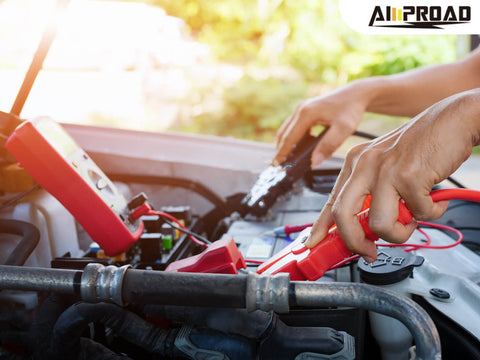
How valuable are online customer reviews in assessing the true performance and reliability of jump starters?
With so many jump starter options available, choosing the right one can feel overwhelming. Here's how to navigate the information overload and find a jump starter that meets your needs.
Online customer reviews offer valuable insights into the real-world performance and reliability of jump starters. Look for reviews that go beyond simply stating whether the jump starter worked or not. Pay attention to details like ease of use, performance in different weather conditions, and how the jump starter held up over time. Reviews from verified purchasers with multiple uses can be particularly helpful.
What role do independent testing organizations play in verifying manufacturer claims about jump starter capabilities?
Independent testing organizations can provide unbiased evaluations of jump starter capabilities. These organizations put jump starters through rigorous testing procedures to assess factors like cranking power, battery life, and safety features. While independent testing results might not be readily available for every jump starter model, looking for brands that participate in such testing demonstrates their commitment to quality and transparency.
How can consumers navigate the marketing jargon and identify trustworthy sources of information?
The world of jump starters is filled with technical specifications and marketing terms. Focus on understanding the core functionalities you need, like cranking amps suitable for your car size and features that prioritize safety and user-friendliness. Look for reviews and information from reputable sources that explain technical details in an easy-to-understand way.
By combining insights from real-world reviews, independent testing (when available), and focusing on your specific needs, you can navigate the marketing jargon and identify trustworthy sources of information. This will empower you to make an informed decision and choose the perfect jump starter to keep you on the road.



